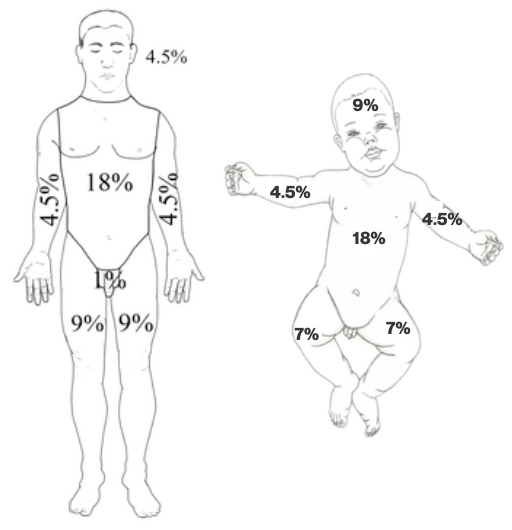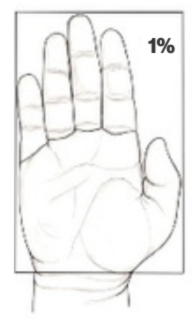For Providers
Transfer Protocols
The UMMC Mississippi Burn Center follows the referral guidelines of the American Burn Association. Their referral guidelines are posted below, unedited, with their permission.
To initiate a referral, call MED-COM at (601) 984-4367.
Guidelines for Burn Patient Referral
(Advice on Transfer and Consultation)
- These guidelines are designed to be used to aid in clinical decision making. If you have sustained a burn injury, please seek medical advice from a medical professional.
- Local and regional infrastructure, resources, and relationships may determine the necessity and timeliness of burn center referral.
- These guidelines are not meant to be definitive care recommendations. They may facilitate building the proper referral network within the local healthcare community.
| Immediate Consultation with Consideration for Transfer | Consultation Recommendation | |
| Thermal Burns |
|
|
| Inhalation Injury |
|
|
| Pediatrics (≤14 years, or <30 kg) |
| |
| Chemical Injuries |
| |
| Electrical Injuries |
|
|
Burn Severity Determination
SUPERFICIAL
- Dry, red, easily blanching, sometimes painful
- Example: Sunburn
- NOT counted in calculations of total burn surface area (TBSA)
SUPERFICIAL PARTIAL THICKNESS
- Moist, red, blanching, blisters, very painful
- Counted in calculations of total burn surface area (TBSA)
DEEP PARTIAL THICKNESS
- Drier, more pale, less blanching, less pain
- Counted in calculations of total burn surface area (TBSA)
FULL THICKNESS
- Dry, leathery texture, variable color (white, brown, black), loss of pin prick sensation
- Counted in calculations of total burn surface area (TBSA)
*Percentage Total Body Surface Area (TBSA)
"RULE OF NINES"

"PALMAR METHOD"

Patient's entire palmar surface is approximately 1%
For more information, visit ameriburn.org/burnreferral.
Copyright© 2022 American Burn Association. The downloadable PDF of the ABA Guidelines for Burn Patient Referral may be distributed in its original form, in its entirety, without permission provided that attribution is given to the American Burn Association. All requests to edit, repurpose, or reprint require permission by emailing abacentraloffice@ameriburn.org with the details of the request.
American Burn Association | 311 S. Wacker Drive, Suite 950 | Chicago, IL 60606 | ameriburn.org


